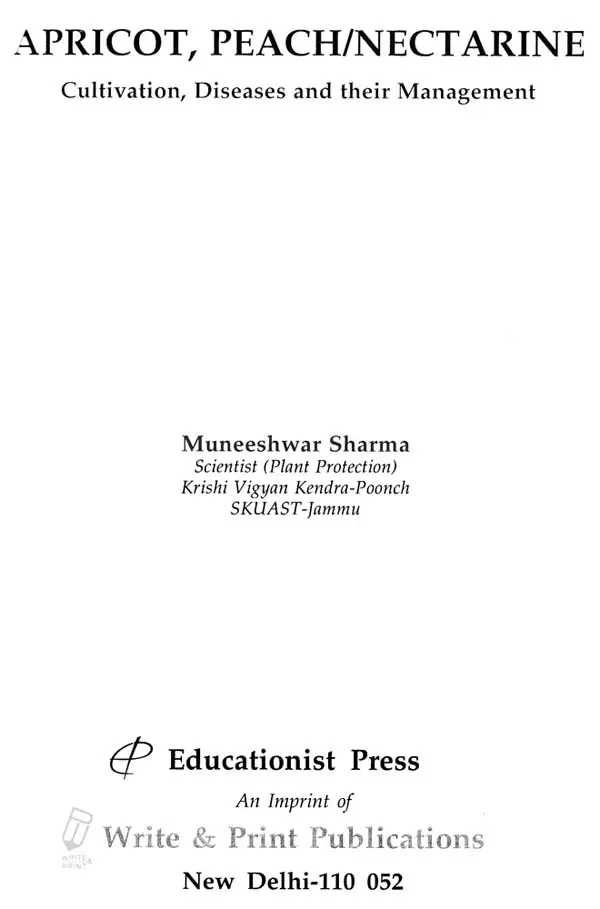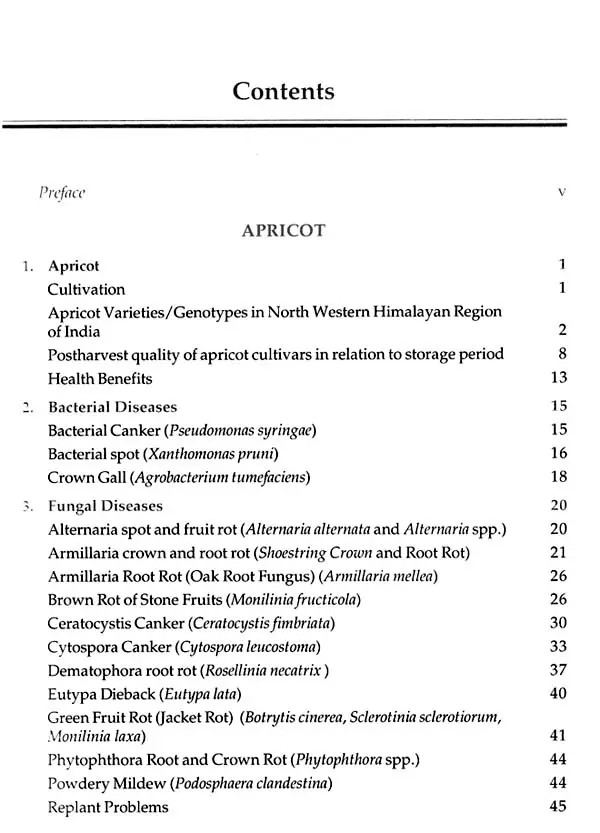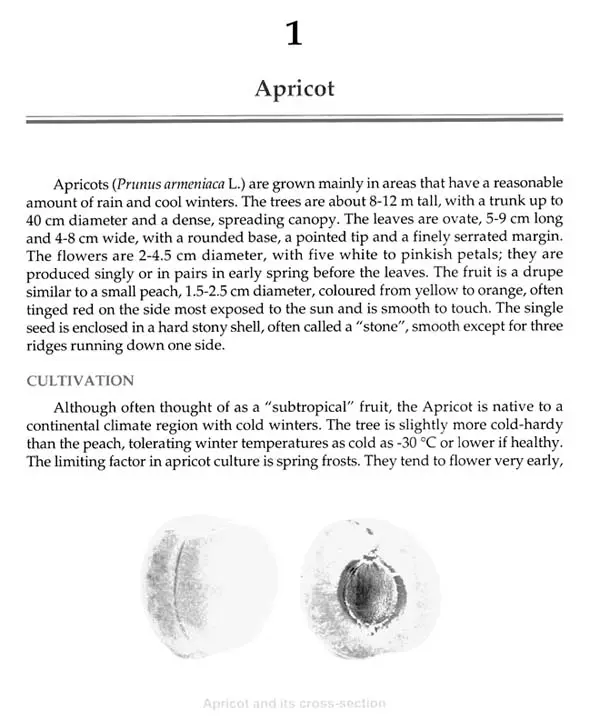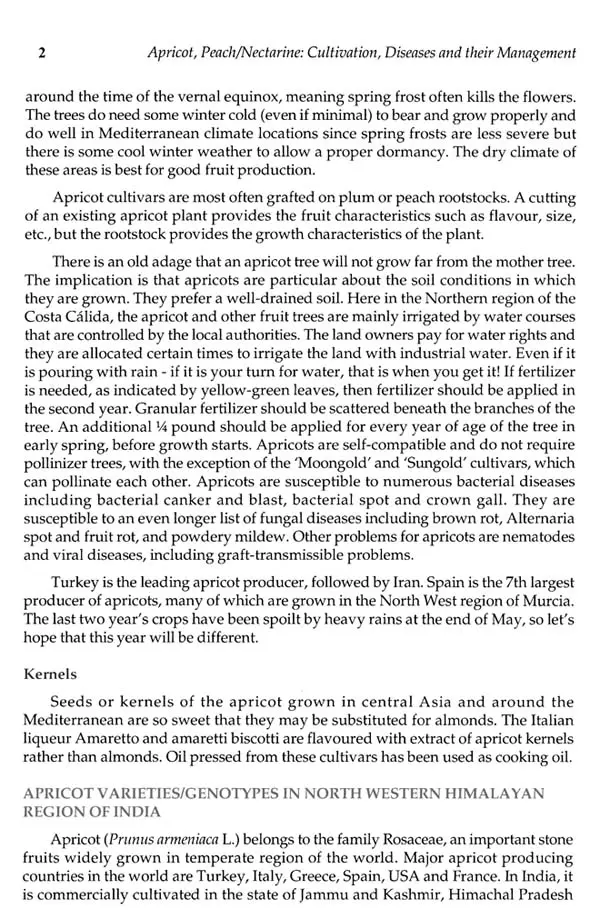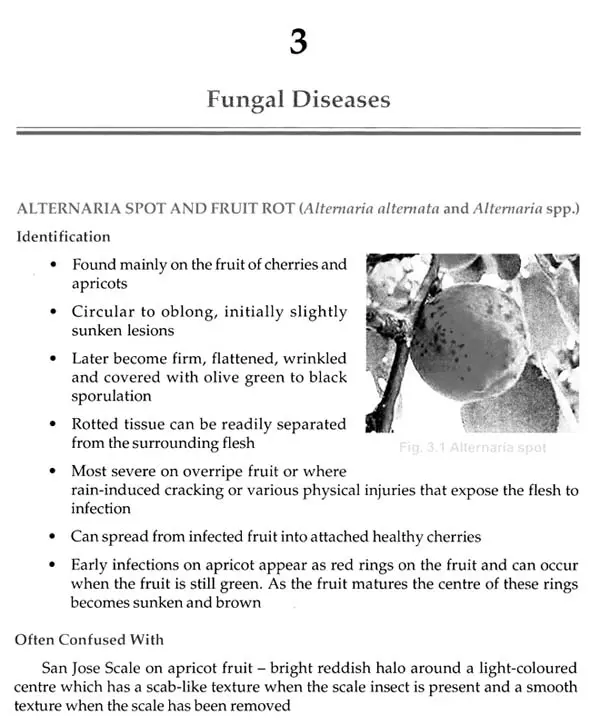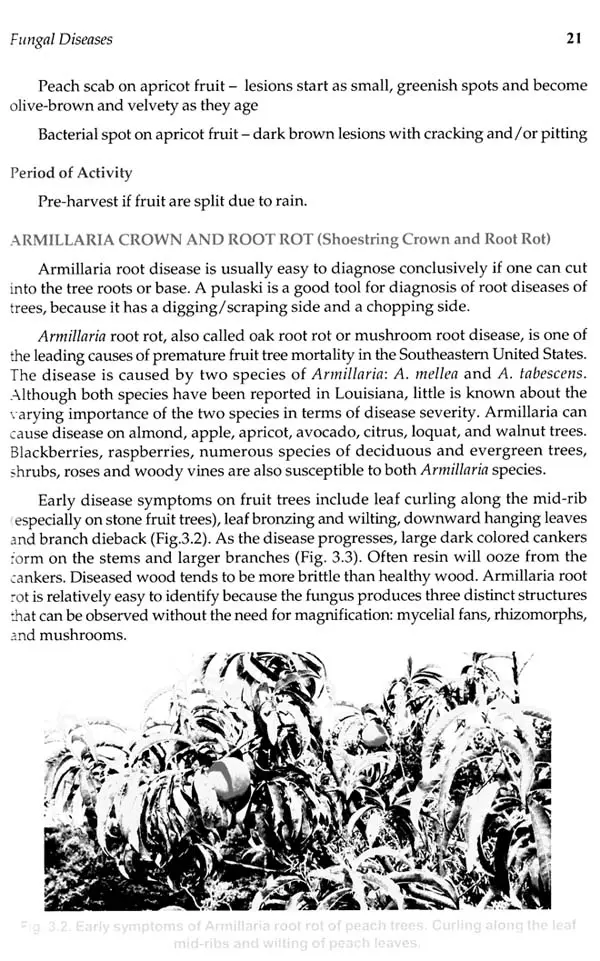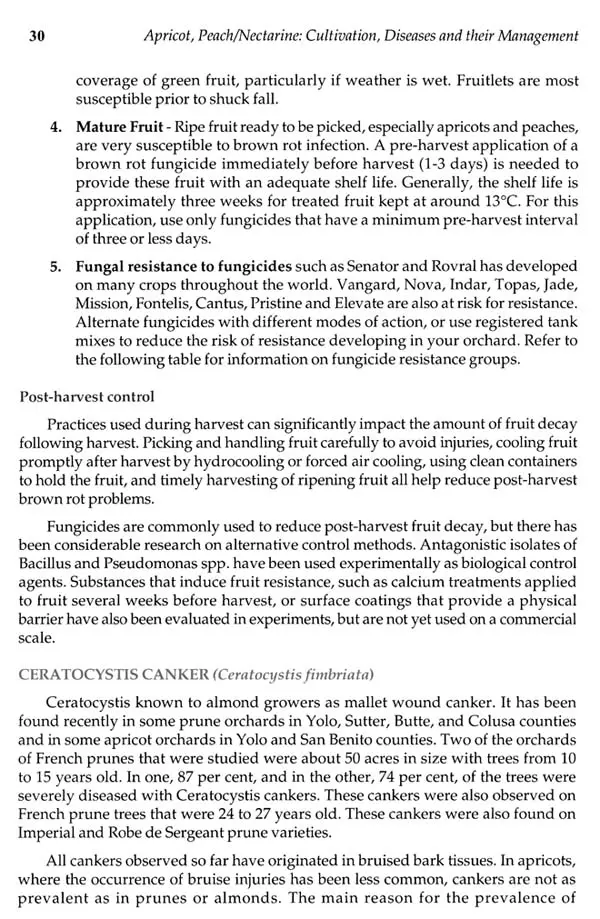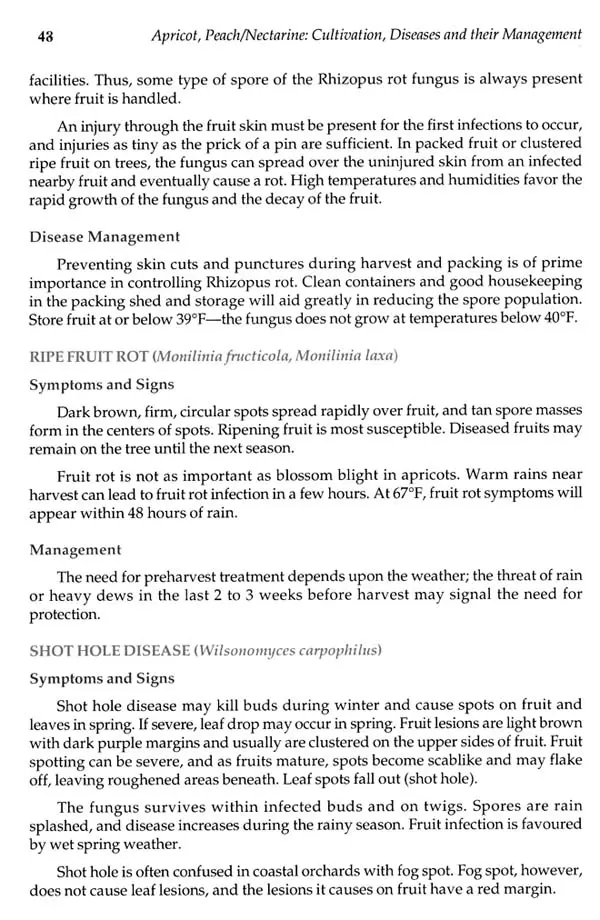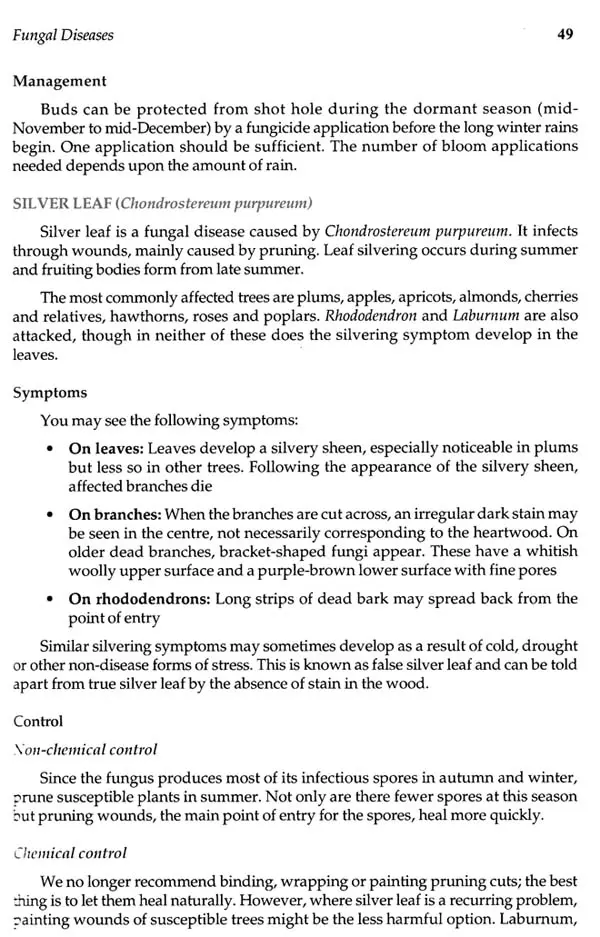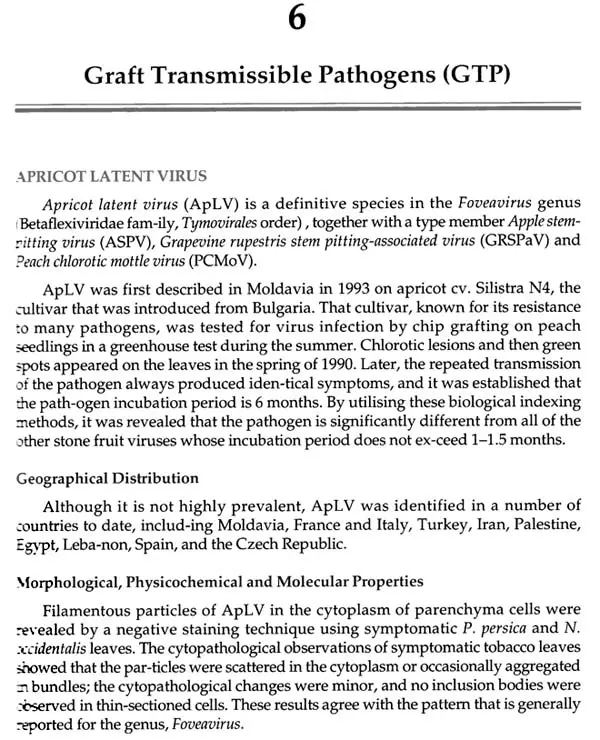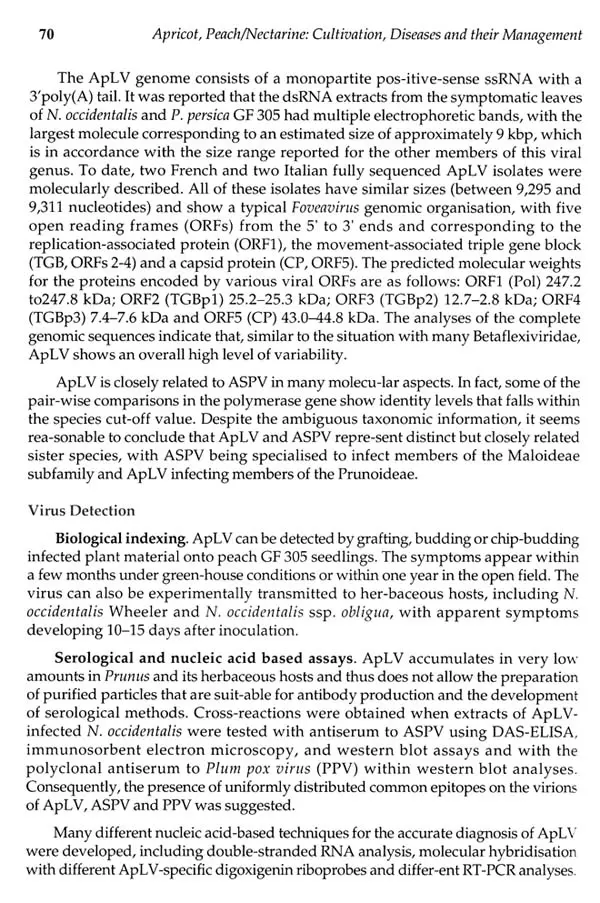
Apricot, Peach/Nectarine Cultivation, Diseases And Their Management
Book Specification
| Item Code: | UAR229 |
| Author: | Muneeshwar Sharma |
| Publisher: | Write and Print Publications, Delhi |
| Language: | English |
| Edition: | 2022 |
| ISBN: | 9789391095031 |
| Pages: | 305 |
| Cover: | HARDCOVER |
| Other Details | 9.50 X 6.40 inch |
| Weight | 670 gm |
Book Description
There are 18 well-written chapters on botanical information about peaches, nectarines, and apricots, various insects and pests, and diseases like bacterial, nematodes, viral and viroid causing great damage to apple crop. Besides these, detailed accounts on phytoplasmal and spiroplasmal diseases have been discussed. Miscellaneous diseases and disorders of peaches, nectarines, and apricots were accounted for in this volume.
We hope this book will be of value and interest to many teachers, students, agricultural scientists, and researchers as a comprehensive, accurate, and easily readable reference book on plant diseases. We shall deem it an honor and reward if readers find this book useful to them.
Dr. Muneeshwar Sharma is working as Scientist (Plant Protection) at Krishi Vigyan Kendra-Poonch of SKUAST-Jammu since July 2014. He did his graduation in Agriculture (B.Sc. Ag.(Hons.)) from M.D.S. University, Ajmer (Rajasthan) completed his Master's in Plant Pathology and Nematology from Allahabad Agriculture Institute (Deemed University), Naini and Ph.D. degree in Plant Pathology from Sher-e-Kashmir University of Agricultural Sciences & Technology of Jammu (J&K). He qualified National Eligibility Test conducted by ICAR in Plant Pathology Discipline (2014). He has several publications to his credit which include research papers, technical bulletins, extension folders, practical manuals and three books published in reputed national/international Journals and publishing houses. He is also a recipient of "Young Scientist Associate Award" in the year 2014, by the Society for Scientific Development in Agriculture and Technology, Meerut for his outstanding work in the field of Plant Pathology. He is also having a vast experience in the management of Insect, Pest and diseases of various cereals, vegetables and fruit plants. He has more than 100 TV talks (Prasar Bharti) and 20 radio talks (AIR) to his credit.
Peaches, nectarines, plums, apricots, and cherries are all members of the Prunus genus and are therefore closely related. They commonly are referred to as "stone fruits" because the seed is very large and hard. Although stone fruit crops can provide delicious fruit from June through September, most stone fruits are native to warmer climates of the world and therefore are very susceptible to injury from low winter temperatures. In addition, because they bloom early in the spring, the flowers frequently suffer damage from spring frosts. Because of this, the backyard culture of stone fruits is more difficult than that of apples or pears.
Plums, cherries and apricots, which along with peaches and nectarines are often called "stone" fruits, are flavorful additions to the home orchard if the home garden site is suitable. European plums and sour cherries are quite hardy with selected varieties hardy to -20°F or more, Japanese plums and especially apricots and sweet cherries are less hardy. These fruits are best planted in extreme southern New Hampshire. A second environmental consideration is the risk of spring frost injury to blossoms. These fruits, especially apricots, bloom in very early spring, often a week or more before apple trees bloom. They should be planted on sites that offer freedom from late spring frosts. Generally, these sites are elevated relative to the surrounding landscape which allows cold air to flow away on clear, cold nights.
Stone fruit trees produce vegetative buds and flower buds. Pruning a young tree controls its shape by developing a strong, well-balanced framework of scaffold branches. Unwanted branches should be removed or cut back early to avoid the necessity of large cuts in later years.
There are 18 well written chapters on botanical information about peaches, nectarines, and apricots, various insects and pests and diseases like bacterial, nematodes, viral and viroid causing great damage to apple crop. Besides these, detailed account on phytoplasmal and spiroplasmal diseases have been discussed. Miscellaneous diseases and disorders of peaches, nectarines, and apricots were accounted in this volume and IPM and peaches, nectarines, and apricots Insects and Diseases.
We hope this book will be of value and interest to many teachers, students, agricultural scientist and researchers as a comprehensive, accurate and easily readable reference book on plant diseases. We shall deem it an honour and reward if readers find this book useful to them.
Dr. Muneeshwar Sharma
